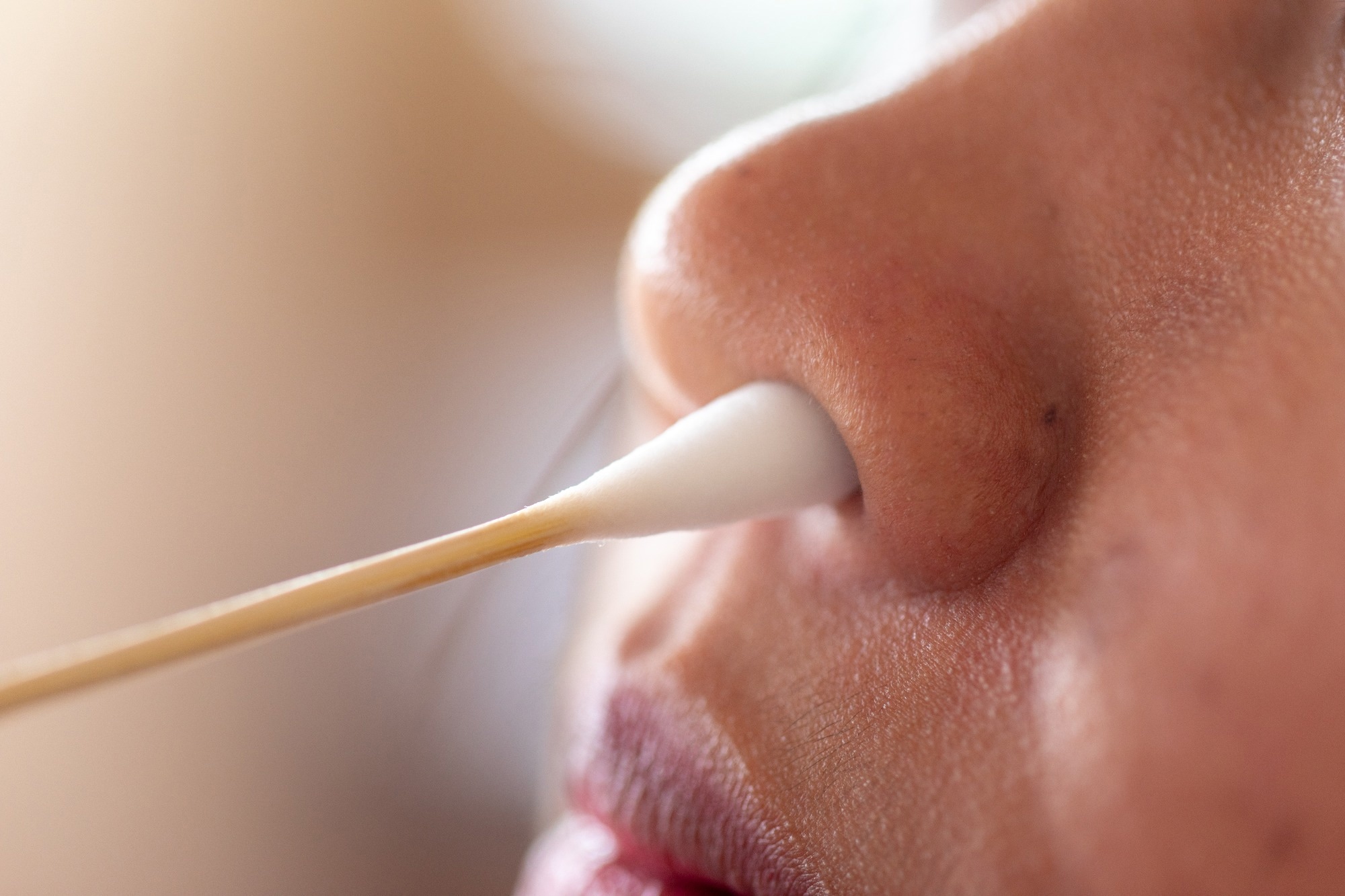Reviewed by Lauren HardakerNov 26 2025
The human nose is home to a diverse community of microorganisms, including both harmful and harmless species. Staphylococcus aureus is a bacterium of particular concern, with some strains exhibiting resistance to antibiotics. Infections caused by these resistant strains can be severe and, in certain instances, untreatable, leading to their classification as a dangerous "hospital bug."

Image credit: Sinhyu Photographer/Shutterstock.com
Approximately one-third of the human population carries S. aureus in their noses, making them potential hosts for this infection-causing pathogen. However, the bacterium's ability to thrive in this environment is significantly affected by the presence of commensal bacteria, which are non-pathogenic. These commensals can either promote or inhibit the growth of S. aureus.
A recent study published in The ISME Journal indicates that competition is a key factor in the nutrient-limited environment of the human nasal cavity.
There’s an active contest between S. aureus and nasal commensals for the vitamin biotin, which affects the fitness of S. aureus.
Simon Heilbronner, Lead Scientist and Professor, Microbiology, Biocenter, Ludwig-Maximilians-Universität München
The infection biologist and his research team explored the molecular mechanisms driving interactions between S. aureus and its commensals.
Biotin is essential for all living organisms, functioning as an enzyme cofactor. This role is critical for multiple metabolic processes, such as gluconeogenesis, fatty acid production, and amino acid catabolism. Because the human body is unable to synthesize this vitamin, it must be obtained through dietary intake, resulting in generally low tissue concentrations.
“Our results show that biotin is available to a very limited extent in the nasal cavity and that deficiency impairs growth and functionality of the cell membrane of S. aureus,” adds Heilbronner.
The ability of the bacterium to synthesize biotin, a trait shared with some commensal organisms, is an energy-intensive process. Moreover, the cell membrane is subject to the continuous, unintentional loss of certain amounts of this vitamin.
All investigated nasal bacterial strains therefore possess very effective molecular mechanisms for absorption of the vitamin.
Simon Heilbronner, Lead Scientist and Professor, Microbiology, Biocenter, Ludwig-Maximilians-Universität München
This creates a significant competitive pressure for this valuable and scarce resource.
Furthermore, some bacteria, particularly coagulase-negative staphylococci, depend heavily on biotin-producing neighbors due to their complete inability to synthesize the vitamin. Consequently, they utilize the biotin produced by other organisms, diminishing the overall availability of biotin within the nasal environment.
We were able to demonstrate that biotin strongly influences the interactions between the species of the human nasal microbiome and promotes both competition and mutual dependencies. Despite its ability to produce biotin itself, S. aureus needs to ingest biotin from the environment for optimal growth and presence of commensals competing for the same resource do therefore slow growth of the pathogen.
Simon Heilbronner, Lead Scientist and Professor, Microbiology, Biocenter, Ludwig-Maximilians-Universität München
This represents a potential vulnerability in the battle against multi-resistant germs.
Simon Heilbronner concludes, “Scientists could specifically develop probiotics consisting of commensals that do not supply biotin for S. aureus with biotin, but compete for it. Alternatively, they could utilize new drugs that block the synthesis or intake of biotin. If successful, such strategies would drive S. aureus out of the nose and reduce the risk of infection.”
Source:
Journal reference:
Bilici, K., et al. (2025). Competitive fitness of Staphylococcus aureus against nasal commensals depends on biotin biosynthesis and acquisition. The ISME Journal. DOI:10.1093/ismejo/wraf248. https://academic.oup.com/ismej/article/19/1/wraf248/8314006.